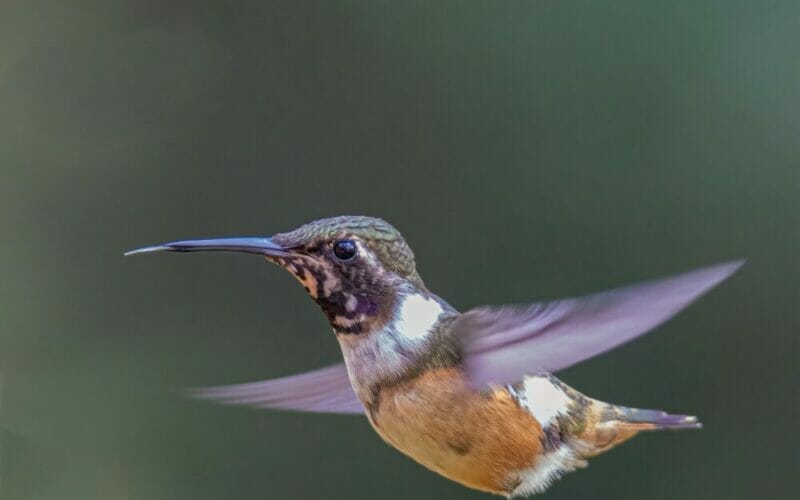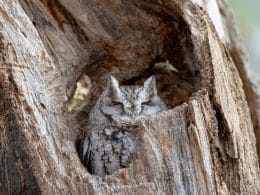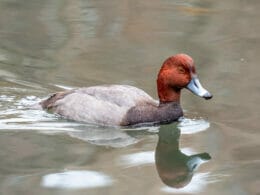The Blue Jay is a beautiful and iconic bird that can be found in many parts of North America. Birdwatchers worldwide are fascinated by these feathery friends and seek out opportunities to observe them.
But do these birds migrate? The answer may surprise you! While some Blue Jays do migrate, others remain in the same area year-round. In this article, we’ll explore the migration patterns of Blue Jays and how they differ from other species. We’ll also discuss why some Blue Jays migrate and why others stay put.
By the end, you’ll have a better understanding of this fascinating bird and its unique behavior.
What is a Blue Jay?

Blue Jays are medium-sized songbirds that belong to the Corvidae family. They have a distinctive blue and white plumage, with a black head and neck.

Blue Jays are found across most parts of North America but they do not like the dry, hot areas of south western America and Mexico.They congregate in small groups and prefer wooded areas, but can also be found in suburban and urban settings. As seen in the distribution chart below, they are sighted all year round.

Migration patterns of the Blue Jay
Migration can be beneficial for these birds, but it also comes with its own set of challenges. By understanding the migration patterns of Blue Jays, we can better appreciate this species and its unique behavior.
Why do some Blue Jays migrate?
Blue Jays migrate for a variety of reasons. One of the main motivations is to find food sources that are more abundant in other areas. During the winter months, many food sources become scarce, so migrating birds can find better sources of sustenance elsewhere.
Additionally, some Blue Jays may migrate in order to breed in different areas or to avoid harsh weather conditions.
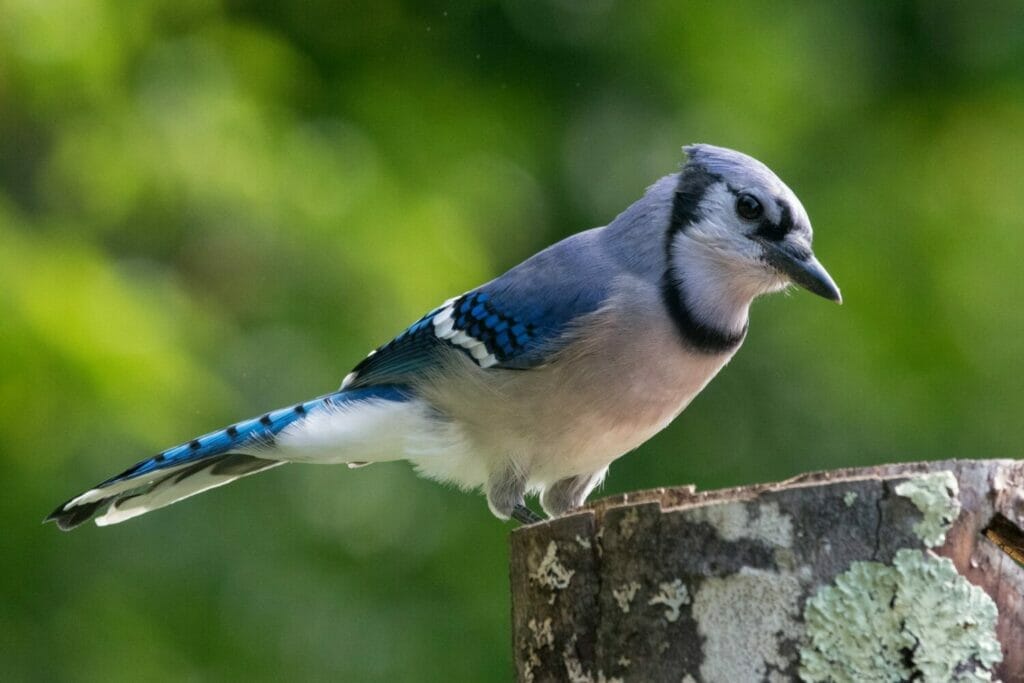
Why do some Blue Jays stay put?
Not all Blue Jays migrate. In fact, some remain in the same area year-round. This behavior is often seen in birds that live in more temperate climates, where food sources are abundant throughout the year.
Additionally, some birds may stay put if they have established a strong bond with their territory or if they have found a mate in the area.
Scientific data on migration
Studies of banded Blue Jay have shown some interesting facts about their migration:
- Less than 20% of the Blue Jay population migrates.
- Birds that migrate from an area may be replaced by other birds migrating in. So, populations may not seem to change. This adds to the confusion.
- Birds in Florida and the Gulf Coast do not migrate.
- Young birds may the most likely to migrate.
- Blue Jay that migrate may not do so every year.
- The spring migration is less obvious than the fall migration.
Unfortunately, the scientific studies seem to raise more questions than they answer! Thanks to The Cornell Lab for the data.

Backyard Tips
Every winter, one can observe thousands of Blue Jays migrating along the coasts of the Great Lakes and the Atlantic. Despite their mysterious behavior during these times, you can encourage them to stay in your backyard. Here are some tips to follow!
Blue Jays are frequent visitors in many residential yards and can be enticed to feeders by providing the proper nutrition. Tray or hopper feeders on a post are preferred, and they love nuts, sunflower seeds, suet, and acorns from oak trees. They also enjoy drinking water from birdbaths.
In spring and summer, heat waves can put young birds perilously at risk. When temperatures rise, bird babies are in danger of becoming dehydrated and overheated. The parents often cannot provide enough for their chicks due to leaving the nest to forage for food and liquid. Consequently, this makes them vulnerable to extreme temperatures and weakens or kills them because of heat exhaustion.
In order to safeguard our bird companions during sweltering weather, we should offer bird baths and other water to help them keep cool.
Nesting
Blue Jays are popular in eastern North America and typically inhabit these areas for nesting. As they spread their wings across the U.S., some have been observed traveling west. A portion of these birds have even ventured out to the Northwest Pacific.
It is not a surprise that some Blue Jays flock down south, choosing to spend winter in locations, like eastern Wyoming and eastern New Mexico.
Given their adaptability, Blue Jays can inhabit many climates all year-round or go on seasonal migrations.
Due to their resourcefulness, they can find nourishment in both rural and urban districts, thus making it simpler to find suitable nesting sites; usually these sites are located high up in treetops or shrubs, giving them a vantage point from potential predators.
Also seen are Blue Jays taking advantage of abandoned nests from other creature types such as crows and hawks when available.
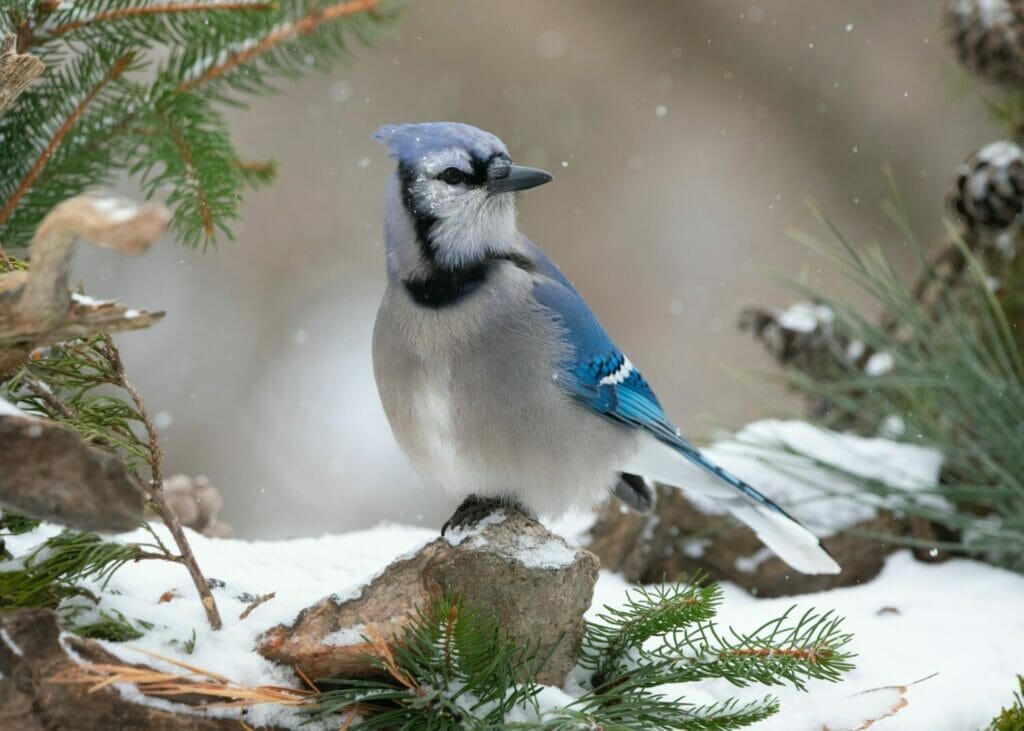
Where to see Blue Jay migration
In September 2015, observers at the Hawk Ridge Bird Observatory in Minnesota counted over 10,000 jays flying past, which suggests that migration may be an important part of their life cycle. However, the reasons behind this migratory behavior remains unknown.
People have been known to view huge flocks of migrating Blue Jays in the Great Lakes area of North America, all the way down to Canada. As many as 200–270 birds per hour have been recorded flying at speeds of between 32 and 34 Km.
Birdwatchers and those who love nature can find this to be an extraordinary experience–the number of Blue Jays seen in such a limited amount of time is noteworthy and gives one an opportunity to study them in their natural surroundings throughout migration season.
If seeking an unforgettable experience with nature is what you are looking for, then witnessing Blue Jay migration in the Great Lakes region should definitely be something on your list!
Final Thoughts
In conclusion, Blue Jays are fascinating birds that have captivated people for centuries. While some Blue Jays migrate, others remain in the same area year-round. Migration can be beneficial for these birds, as it allows them to find new sources of food and explore new areas.
Additionally, migration helps to spread the species across larger distances, which helps to ensure its survival. By understanding the migration patterns of Blue Jays, we can better appreciate this species and its unique behavior.
We can provide resources for these birds in our own backyards by offering feeders with high quality bird food and places for them to cool off when it’s hot. Happy birdwatching!
FAQ
Spring migration is between April and June. Fall migration is in September and October.
Studies have shown that Florida Blue Jays do not migrate so you are pretty much guaranteed to see them there.
There are rather lovely names for groups of Blue Jay. They are known as a party or band.
Steller’s Jays are the dark version of the Blue Jay and they live in the south west, where Blue Jays don’t. It is not beleived that they migrate.





